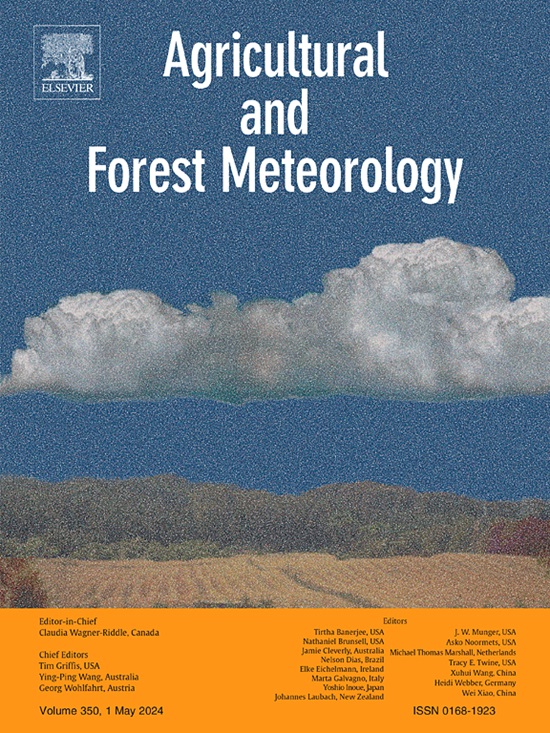The spatiotemporal variations in ecosystem photosynthetic quantum yield and their drivers
IF 5.6
1区 农林科学
Q1 AGRONOMY
引用次数: 0
Abstract
The quantum yield (α) of photosynthesis represents the maximum light use efficiency (LUE) as indicated by the initial slope of photosynthetic light response curves. α is an important variable in LUE-based models which are widely used to simulate gross primary productivity (GPP) from regional to global scales. However, the spatiotemporal variations in α at the ecosystem scale remain elusive despite its importance. Here, we leveraged long-term eddy-covariance observations from 90 sites globally and examined the spatiotemporal variations in α and their drivers, using statistical and machine learning approaches. We found significant spatial variability in α across and within biomes, primarily driven by atmospheric vapor pressure deficit (VPD) and soil moisture variations. Meanwhile, the temporal changes in α are primarily driven by the negative effect of VPD, which weakens the positive effects of elevated CO2 and leaf area index (LAI). Our results highlight the dominant role of VPD in controlling the spatiotemporal variations of α and the unneglectable impacts of soil moisture, CO2, and LAI on α. These new results provide insights for improving the representation of α in LUE-based models for GPP simulations.
求助全文
约1分钟内获得全文
求助全文
来源期刊
CiteScore
10.30
自引率
9.70%
发文量
415
审稿时长
69 days
期刊介绍:
Agricultural and Forest Meteorology is an international journal for the publication of original articles and reviews on the inter-relationship between meteorology, agriculture, forestry, and natural ecosystems. Emphasis is on basic and applied scientific research relevant to practical problems in the field of plant and soil sciences, ecology and biogeochemistry as affected by weather as well as climate variability and change. Theoretical models should be tested against experimental data. Articles must appeal to an international audience. Special issues devoted to single topics are also published.
Typical topics include canopy micrometeorology (e.g. canopy radiation transfer, turbulence near the ground, evapotranspiration, energy balance, fluxes of trace gases), micrometeorological instrumentation (e.g., sensors for trace gases, flux measurement instruments, radiation measurement techniques), aerobiology (e.g. the dispersion of pollen, spores, insects and pesticides), biometeorology (e.g. the effect of weather and climate on plant distribution, crop yield, water-use efficiency, and plant phenology), forest-fire/weather interactions, and feedbacks from vegetation to weather and the climate system.

 求助内容:
求助内容: 应助结果提醒方式:
应助结果提醒方式:


